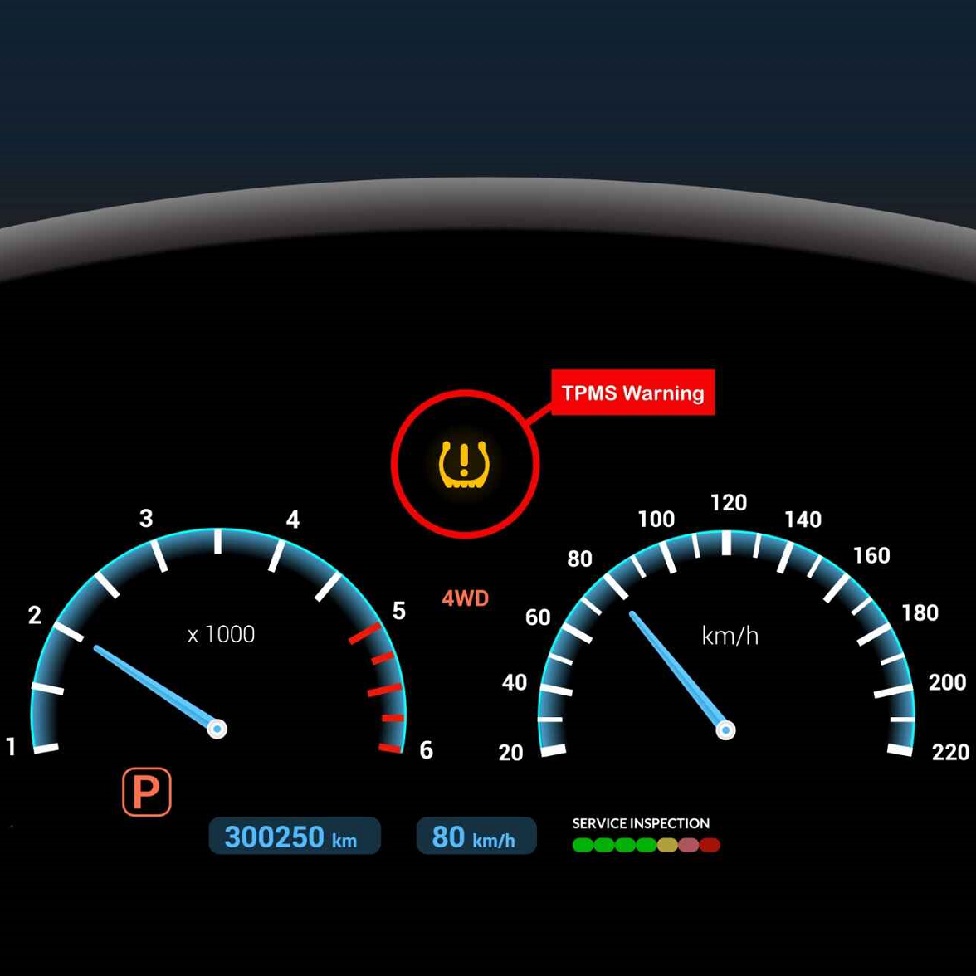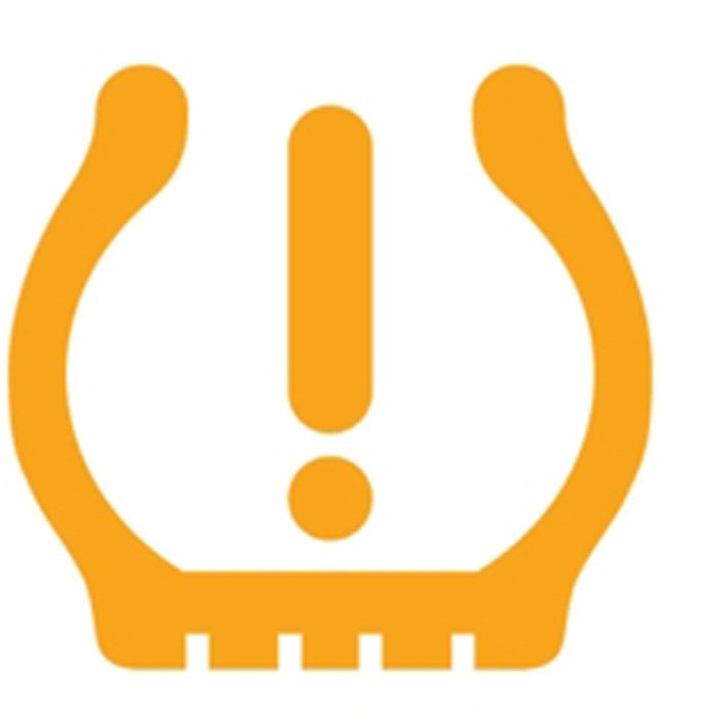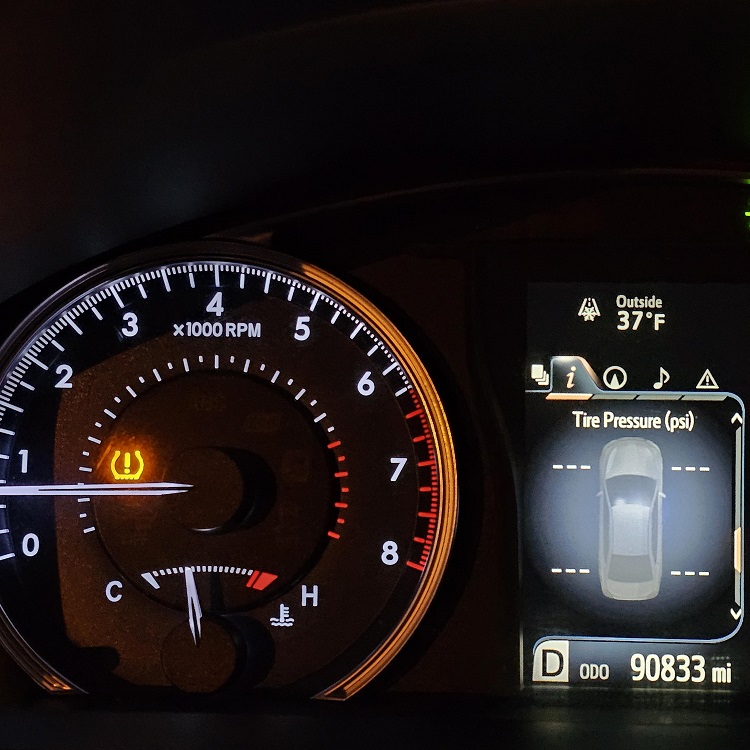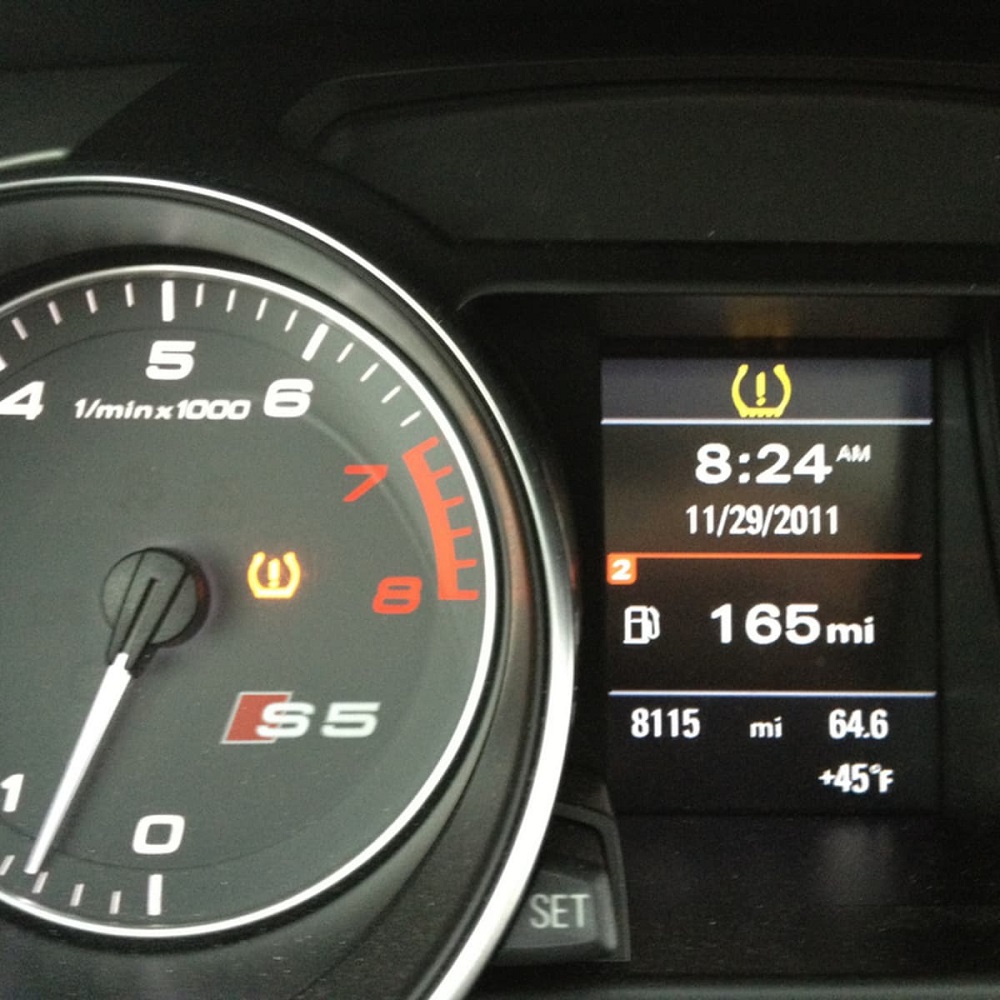Introduction to TPMS and Its Importance for Vehicle Safety
A Tire Pressure Monitoring System (TPMS) is crucial for driving safety. It alerts you when your tire pressure is too low, which could lead to tire failure and possible accidents. This system uses sensors to monitor the air pressure in each tire. When the TPMS light on your car dashboard activates, it means at least one tire is significantly underinflated. It is a safety feature now standard in most vehicles. It helps prevent accidents caused by poor tire pressure. By alerting you to tire pressure issues, the TPMS allows you to address them before they become dangerous. Regular tire pressure checks remain important, even with a TPMS. Check tire pressure monthly to ensure safety on the road.
Decoding the Dashboard: Recognizing the TPMS Light
When driving, the appearance of a TPMS light on your car dashboard can be alarming. The TPMS light, generally represented by an exclamation mark within a horseshoe-like symbol or next to a tire icon, is a crucial warning. Identifying this light quickly is key to addressing tire pressure issues before they escalate.
This light serves as a proactive alert that one or more of your tires are significantly underinflated. Recognizing it promptly can prevent potential tire failures or accidents. If you see the TPMS light illuminated steadily while driving, it indicates that your tire pressure is at least 25% below the vehicle manufacturer’s recommendation. On the other hand, a flashing TPMS light suggests a malfunction in the tire pressure monitoring system itself, requiring professional assessment.
Understanding what the TPMS light looks like and what it signifies can greatly enhance your safety on the road.
Common Triggers: Why the TPMS Light Illuminates
The TPMS light on your car dashboard can come on for several reasons. Here are a few common triggers you should know about:
- Low Tire Pressure: This is the most frequent cause of an illuminated TPMS light. Your tires can lose pressure over time or due to temperature changes.
- Temperature Variations: In cold weather, tire pressure can drop, triggering the TPMS light. The opposite is true when temperatures rise.
- Tire Damage: Punctures or injuries to your tire can lead to air leaks. This will cause the TPMS light to come on.
- Faulty TPMS Sensor: Sometimes the issue might not be your tires, but a malfunctioning sensor. These sensors can get damaged or their batteries may die, leading to false alarms.
- Recently Changed or Rotated Tires: If the tires were serviced but the TPMS wasn’t reset properly, the light might wrongly activate.
- Discrepancy in Tire Air Levels: Refilling tires and not meeting the specific pressure level can cause the light to turn on.
When the TPMS light does illuminate, it’s a sign to check your tires. Ignoring this alert could lead to greater danger on the road. Take action promptly to ensure your drive remains safe. Address tire pressure issues as they arise, and if the light indicates a sensor fault, visit a professional to have it checked out.
Responding to an Illuminated TPMS Light: Immediate Steps
When the TPMS light on your car dashboard lights up, quick and appropriate action is crucial. Here are the immediate steps you should take:
- Slow Down and Evaluate: Reduce your speed gradually. Avoid sudden braking to maintain control.
- Check Tire Visuals: If possible, safely pull over and visually inspect your tires for obvious damage like punctures or flats.
- Measure Tire Pressure: Use a reliable digital tire gauge to check the pressure of each tire. Compare it against the manufacturer’s recommended levels.
- Inflate Tires if Necessary: If any tire is under-inflated, inflate it to the recommended pressure if you have access to an air compressor.
- Visit a Tire Shop: If the TPMS light remains on after checking and inflating the tires, or if you find damage, head to a professional tire shop immediately.
- Do Not Ignore: Ignoring the TPMS light can lead to tire failure and potential accidents. Address the issue as soon as possible.
These steps help ensure that you address the potential risks indicated by your TPMS light promptly and maintain your safety on the road.
TPMS Light Troubleshooting: Identifying False Alarms and Real Issues
Troubleshooting your TPMS light involves identifying if you have a real tire issue or a false alarm. Here are steps to determine the cause:
- Check All Tires: Begin by visually inspecting each tire for obvious signs of damage or low pressure.
- Use a Tire Gauge: Confirm the pressure with a digital tire gauge. This gives you an accurate picture.
- Compare Pressure Readings: Match your measurements to the car manufacturer’s recommended levels, found in your manual.
- Note the Light’s Behavior: A steady light often points to actual low pressure. A flashing light might indicate sensor issues.
- Check for Recent Tire Work: Think back to any recent tire services. They might have missed a TPMS reset.
- Consider Temperature Changes: Sudden drops in temperature can affect tire pressure and trigger the light.
- Look for Consistency: If the light turns off after driving a short distance, it might have been a minor fluctuation in tire pressure.
- Monitor After Adjusting Pressure: If the light stays on after correcting tire pressure, there may be a deeper issue with the TPMS.
When facing real issues, not just false alarms, take your vehicle to a professional. They can diagnose and resolve problems quickly and safely. Remember, always act on alerts from your TPMS light to ensure your safety and maintain your vehicle’s performance.
Winter Woes: How Cold Weather Affects Your TPMS Light
The chilly season can bring surprises for motorists, particularly relating to tire pressure and the TPMS light. Cold temperatures cause air to contract, lowering the pressure in your tires. This can lead directly to the TPMS light flickering on your dashboard when you least expect it.
The colder it gets, the more your tire pressure drops – think roughly one PSI for every 10-degree Fahrenheit decrease in temperature. Notably, this effect is usually most pronounced early in the morning when temperatures are at their lowest.
You might notice your TPMS light come on and then turn off again during your drive. This is often because the air in the tires warms up and expands as the tires roll along the road. Regardless, it’s a situation that calls for attention. Don’t dismiss a light that goes off; it might be a signal that your tire pressure is in the lower threshold.
To avert this winter headache, regular checks of your tire pressure are crucial. Equip yourself with a trusted digital tire gauge. Be diligent, especially before long trips or when temperatures dive unexpectedly.
Winter tires are another smart move. Their special design copes better with cold, ensuring your tire pressure stays more consistent. As such, they may help prevent frequent activations of your TPMS light.
If your TPMS light persists even in warmer conditions, or if it blinks indicating sensor issues, it’s time to consult the pros. They’ll pinpoint whether it’s a tire or a TPMS malfunction and help preserve your on-road safety.
Professional Care: When to Seek Assistance for TPMS Issues
When the TPMS light on your car dashboard won’t turn off, it’s time to seek professional help. Even after inflating your tires to the recommended levels, if the light remains on, there might be a deeper issue at play. Here’s when you should consider professional care:
- Persistent Light After Correction: If the TPMS light stays illuminated after checking and inflating your tires, it’s a sign that professional diagnostics are needed.
- Flashing TPMS Light: A flashing light often means there’s a malfunction with the sensors or with the system itself. Experts can pinpoint the problem.
- Recurring Alerts: If the light reactivates frequently, it could indicate a chronic issue that requires professional attention.
- After Installing New Tires: Sometimes, changing or rotating tires can disrupt the TPMS. Technicians can reset or recalibrate the system.
- Battery Issues: TPMS sensors have batteries that may die, affecting performance. Tire shops have the tools to check sensor batteries.
- Damaged Sensors: Road hazards can damage TPMS sensors. Mechanics can replace faulty sensors to restore system functionality.
Skilled technicians have the expertise and equipment to diagnose and fix TPMS issues efficiently, ensuring the system does its job: keeping you safe. If you’re unsure of what to do, it’s always best to consult with a professional. Remember, tire safety is no small matter. Proper care keeps you and others on the road safe.
Maintaining Proper Tire Pressure: Beyond the TPMS Light
Keeping your tires at the right pressure is vital. The TPMS light on your car dashboard is a helpful guide. Yet, it’s just part of the story. Regular checks are key to tire safety, even with TPMS. Here’s why and how to do it right.
Understand Your Manufacturer’s Recommendations: Every car has a tire pressure sweet spot. You’ll find this number in your owner’s manual. Stick to it for the best performance and safety.
Use a Good Quality Tire Gauge: Invest in a digital tire gauge for accurate readings. Station gauges may be off. Always measure tire pressure when tires are cold, for the most reliable result.
Check Monthly: Make it a routine. Inspect your tire pressure at least once a month. Also, do it before long drives or carrying heavy loads.
Look for Visual Clues: Though not foolproof, a flat-looking tire is a warning. Check the pressure to be sure.
Factor in Temperature Changes: Remember, weather affects pressure. Check more often when seasons change. Tire pressure drops in cold weather even without leaks.
Consider Winter Tires: These special tires stay flexible in cold. They can help keep tire pressure more stable in winter.
It’s not enough to rely on the TPMS light alone. Make manual checks part of your car care routine. This habit can improve your safety, tire life, and fuel economy. When you’re proactive about tire pressure, you reduce the risk of tire-related incidents. And, if you ever spot problems, don’t hesitate to seek professional help. Your car’s tires are its foundation. Keep them strong and well-inflated.



